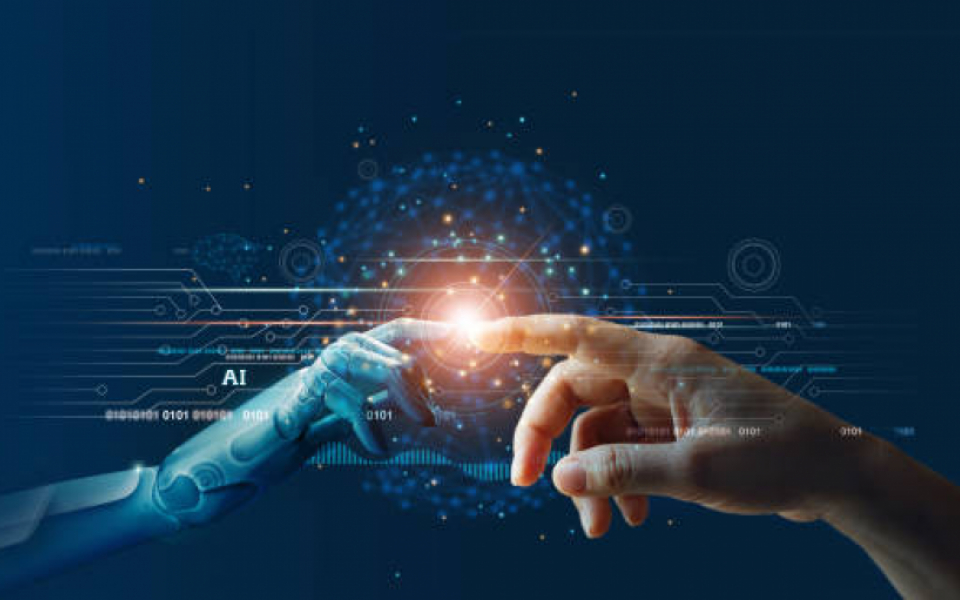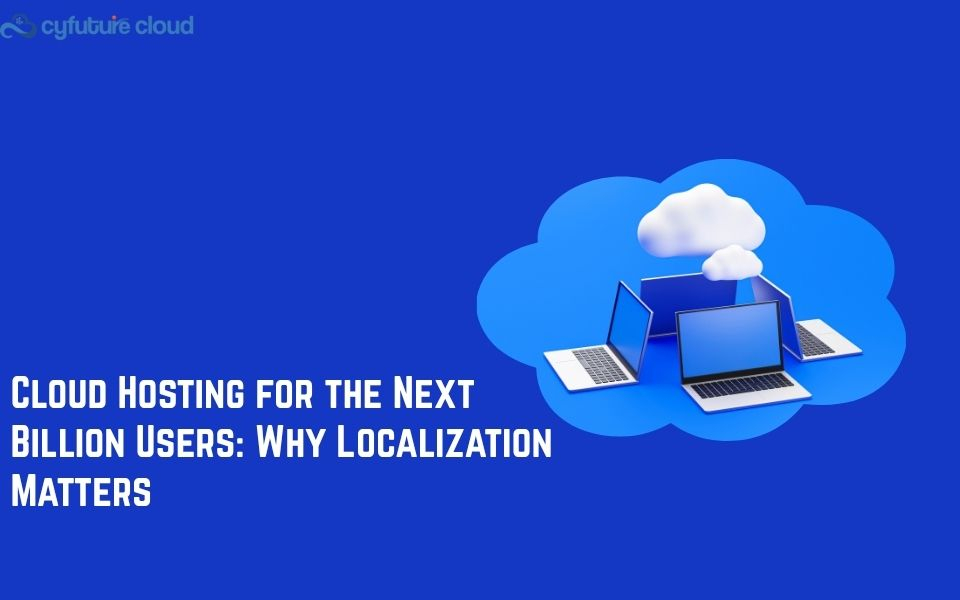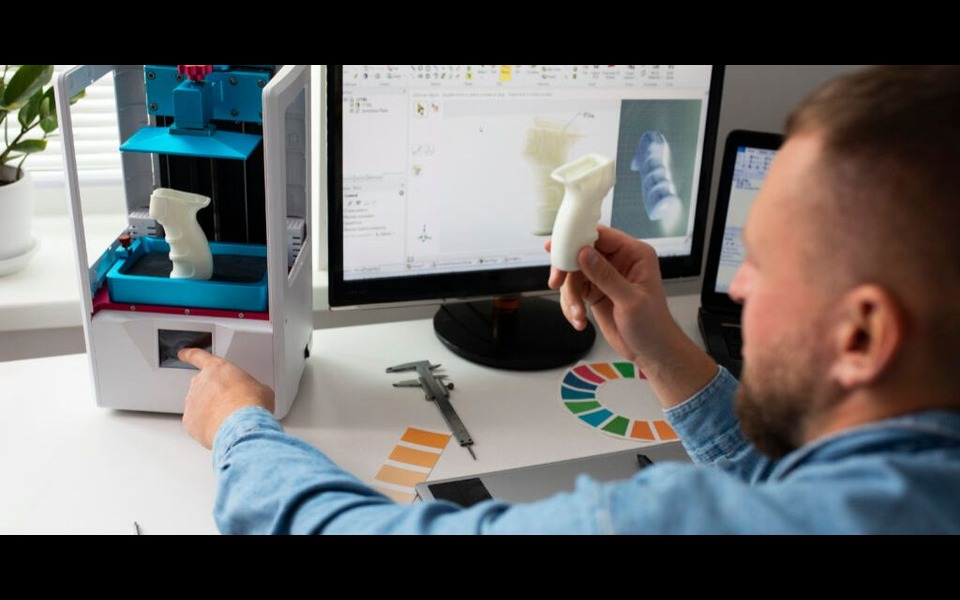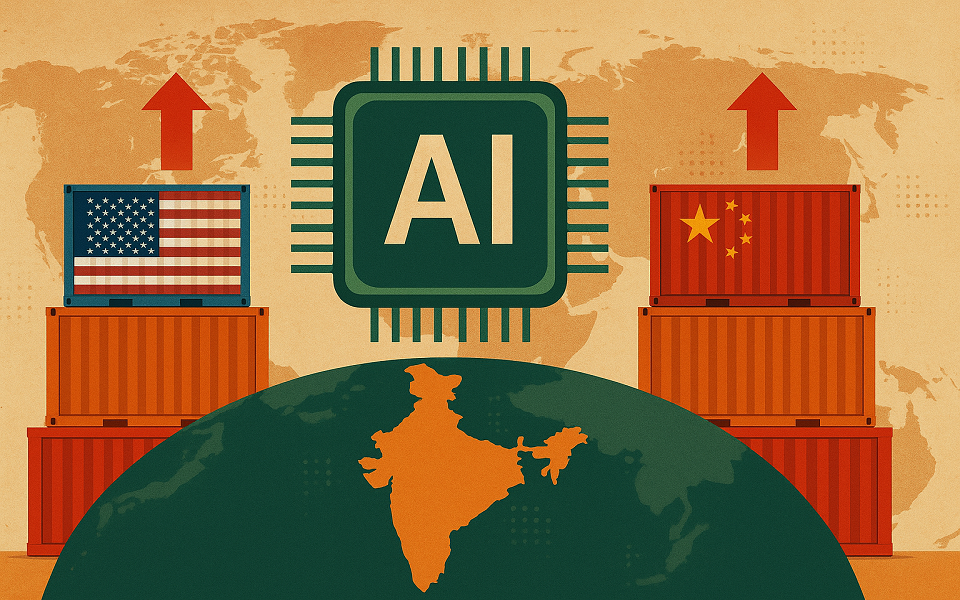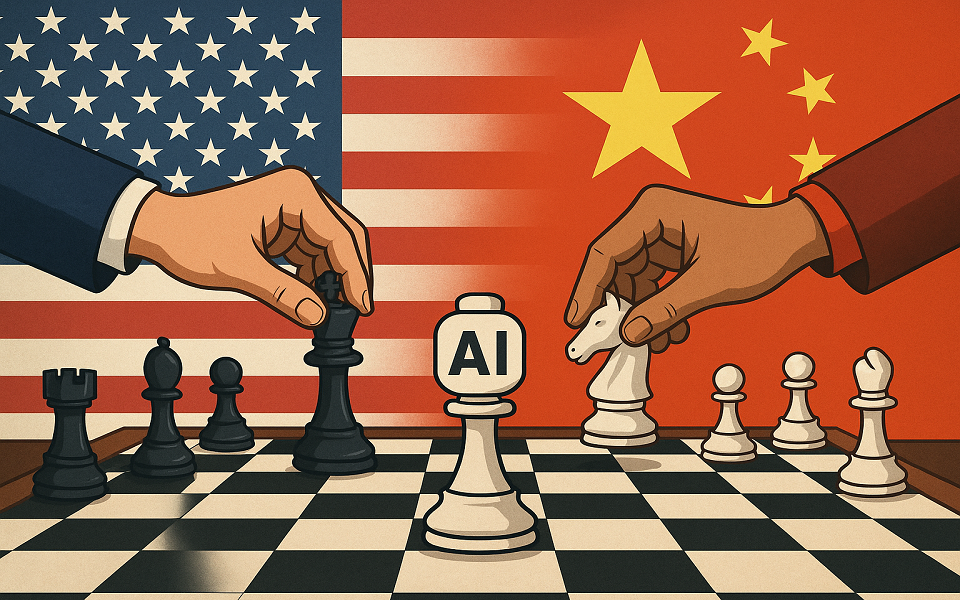Introduction
Imagine waking up in the morning to the gentle voice of your AI assistant, updating you on your day's schedule, while a robotic chef prepares your favorite breakfast. As you sip your coffee, your self-driving car awaits outside, ready to tackle the morning commute. This isn't a scene from a futuristic Hollywood movie, but a glimpse into the impending reality where artificial intelligence (AI) and robotics will be intertwined with every facet of our lives.
From healthcare to home automation, and from finance to fashion, AI and robotics are not just reshaping industries—they're redefining the very fabric of our daily existence. The convergence of these technologies promises solutions to some of humanity's most pressing problems, while also introducing a plethora of new opportunities and experiences.
In a world where technology evolves rapidly, artificial intelligence (AI) and robotics stand out as dual forerunners of a new era of digital progression. According to Grand View Research, by 2025, the AI market is projected to hit a staggering $190.61 billion. Meanwhile, robotics follow closely with predictions of reaching $74.1 billion in the same timeframe. Yet, it's essential to look beyond these monumental figures and delve deeper into how these innovations seamlessly integrate into our daily lives.
We know, these numbers are interesting and we are completely waiting for innovations ahead. Agree or not, AI and robotics have somehow improved our lives for good.
Let’s explore more about AI and robotics.
Artificial Intelligence- The Digital Brain Power
Artificial Intelligence (AI) is like the brainpower of machines. Instead of just following instructions, AI helps machines "learn" from information, allowing them to make decisions or predictions better on their own.
The idea of AI isn't new. It started way back in the 1940s and 1950s. Thinkers like Alan Turing asked if machines could think like us. By 1956, the term "Artificial Intelligence" was introduced, and the study of AI officially began. The journey wasn't always smooth; there were times of rapid progress and periods of doubt.
Today, AI is everywhere – from voice assistants on our phones to smart algorithms that suggest what to buy next. It's amazing to see how far we've come and even more exciting to think about where we're headed!
Generative AI is am emerging technology these days, now the question is What Is Generative AI And Why Is It So Popular? Basically, Gen AI is a part of Artificial Intelligence that holds the ability to generate many different types of content, including but not limited to audio, imagery, text, and synthetic data.
Robotics- Our Mechanical Allies
Robotics is the fascinating realm where engineering meets science to craft incredible machines we call robots. Ever wondered who designs these robots or how they operate? That's the magic of robotics!
This field isn't just about building cool machines; it's about creating systems that can feel their surroundings, think (in a way), and act based on the information they gather. More than that, robotics empower us to build machines that can tackle tasks too risky for humans or enhance our abilities in unprecedented ways.
Today, many robots are hard at work in factories, streamlining production and making things more efficient. But that's not the end of the story. Robots are starting to pop up in our homes, hospitals, schools, and even hotels and theatres. They're making our lives easier, safer, and a lot more fun!
The global race is on to lead in robotics, and it's easy to see why. With robots, we can work smarter, faster, and in ways we've never imagined. In the world of production, robots mean better quality, fewer risks, and cost savings. In a nutshell, the age of robotics promises a brighter, more efficient future for all of us.
Venturing Beyond the Present
In our ever-evolving digital landscape, technology, and innovation have become deeply woven into our daily tapestry. Yet, we're only at the dawn of what robotics and AI promise for our future. Let’s dive deeper into the sectors where they’re making significant strides.
1. Manufacturing-
The manufacturing realm is experiencing a transformative phase with the integration of robotics and AI. Companies are adopting robots for myriad reasons-
- Efficiency- Robots can work round the clock without fatigue, ensuring that production lines never halt.
- Cost-Effectiveness- Over time, robots can reduce labor costs and enhance product consistency, leading to better profit margins.
- Safety- In areas where human safety could be compromised, like in mines or high-altitude construction, robots ensure the work proceeds without risking human lives. Concurrently, AI assists in tailoring product designs by analyzing consumer data, ensuring products evolve as per consumer preferences.
2. Medicine-
The medical domain is undergoing rapid technological advancements, thanks to robotics and AI. Here's how-
- Precision in Surgeries- Robotic arms, with their high precision, are assisting surgeons, ensuring that procedures are more accurate and less invasive.
- Data-Driven Insights- AI, by analyzing vast datasets, can detect patterns that humans might overlook. This means early diagnosis, tailored treatment plans, and potentially discovering cures for diseases that have long baffled us.
3. Business-
The corporate world is recognizing the immense potential of robotics in daily operations-
- Operational Efficiency- Robots can handle repetitive tasks like inventory management or even customer service, ensuring that operations are smooth and error-free.
- Innovative Service Delivery- Imagine a cafe where your latte is crafted by a robot, ensuring the perfect brew every time. Or think about a logistics chain where robots sort and deliver packages, speeding up delivery times. Such innovations are making businesses more dynamic and customer-centric.
- Competitive Edge- Early adopters of robotics often have the advantage of setting industry standards, ensuring they stay ahead of competitors in delivering unique customer experiences.
Robotic Process Automation- An Efficiency Powerhouse
Robotic Process Automation (RPA) is a technology that utilizes software robots or 'bots' to automate repetitive, routine tasks that previously required human intervention. These bots are programmed to interact with applications and systems, mimicking the way a human would—be it for data entry, processing transactions, or communicating across various software platforms.
Benefits of RPA
- Enhanced Productivity- Bots operate continuously, ensuring tasks get done faster and more consistently.
- Cost Efficiency- RPA can result in significant cost savings over time, as automation reduces the need for manual labor.
- Improved Accuracy- RPA eliminates errors stemming from human fatigue or oversight.
- Scalability- Based on requirements, RPA solutions can be easily scaled, handling more tasks when needed.
- Better Compliance- RPA offers traceable records of each task performed, ensuring regulatory compliance.
- Employee Satisfaction- With bots managing monotonous tasks, employees can focus on strategic and more meaningful work.
Why is RPA Transformative?
RPA stands as a game-changer because it offers a new approach to operational efficiency. It bridges the divide between existing systems and new-age requirements without the need for extensive system overhauls. In doing so, RPA ensures organizations remain agile, adapting to market dynamics, regulatory changes, and evolving customer needs swiftly.
Is RPA the Same as Artificial Intelligence (AI)?
No, RPA and AI serve different functions but can be integrated for enhanced capabilities. RPA automates specific rule-based tasks using predefined criteria.
AI, in contrast, is about enabling machines to mimic human-like thinking, making decisions based on patterns, data interpretation, and learning. However, when RPA tools, like RPA UiPath, are combined with AI functionalities, it results in intelligent automation. This allows bots to not just execute tasks but also make informed decisions, process unstructured data, and improve over time.
Use Cases of Robotic Process Automation (RPA)
RPA has been making waves across various sectors due to its versatility and the vast range of processes it can automate. Let's explore some of the most prominent use cases-
Finance & Banking
- Transaction Processing- Automate routine bank transactions, ensuring they're executed without errors and in real-time.
- Fraud Detection- Analyze vast amounts of transactional data to identify potentially fraudulent activities swiftly.
- Credit Card Processing- Automated verification and approval/rejection of credit card applications based on pre-defined criteria.
Human Resources
- Onboarding & Offboarding- Simplify the employee onboarding and offboarding processes by automating tasks such as account creation, email setup, or access provisioning.
- Payroll Processing- Ensure accurate and timely disbursal of salaries by automating data input and validation.
- Attendance and Leave Tracking- Automatically collate and analyze employee attendance and leave data.
Healthcare
- Patient Scheduling- Automate appointment bookings and reminders for patients.
- Billing and Claims Processing- Streamline the processing of insurance claims, ensuring faster turnaround times.
- Electronic Health Record (EHR) Management- Automate data entry into EHR systems, ensuring accuracy and compliance.
Retail
- Inventory Management- Automate stock checks and reorder processes based on pre-defined thresholds.
- Customer Data Management- Streamline the process of collecting and updating customer information.
- Order Processing- Automate the entire order-to-cash process, improving order fulfillment rates.
Supply Chain and Logistics
- Order Tracking- Automatically update and notify customers about their order status.
- Supplier Communication- Automate communication with suppliers for order placements or stock replenishments.
- Returns Processing- Streamline the returns and refunds process.
Customer Service
- Query Resolution- Use bots to address frequently asked questions, reducing the workload on human agents.
- Ticket Creation and Assignment- Automate the process of ticket generation and assignment based on the nature of customer queries.
- Feedback Collection- Automate post-interaction feedback collection processes.
Telecommunications
- Service Activation/Deactivation- Automate processes related to the activation or deactivation of user services.
- Billing and Account Management- Streamline billing cycles and manage user accounts without manual intervention.
Real Estate
- Property Listings- Automatically update property listings based on availability and other criteria.
- Tenant Background Checks- Automate the verification process for potential tenants.
- Lease Management- Digitally manage lease renewals, terminations, and documentation.
Government
- Public Records Management- Automate the archiving and retrieval of public records.
- License Renewals- Simplify the process of renewing licenses by automating application checks and approvals.
- Tax Processing- Streamline tax-related processes like data validation, payment processing, and notifications.
Education
- Student Enrollment- Automate the enrollment process by validating student data and allocating resources.
- Transcript Requests- Facilitate and streamline the process of issuing academic transcripts or certificates.
- Course Scheduling- Automate the allocation of courses, considering factors like availability, student preferences, and classroom capacity.
These use cases merely scratch the surface of what RPA can achieve. As the technology matures, its applications continue to expand, reshaping the way industries operate.
Why Robotics and AI are Steering our Future?
The interplay between robotics and AI isn't merely technological jargon; it's the foundation of our future. Here's why
- Elevated Living Standards- With robots aiding in household tasks and AI enhancing educational methods, the promise of an improved lifestyle beckons.
- Addressing Global Challenges- Robotics and AI have the potential to offer solutions to pressing global issues, from climate anomalies to healthcare disparities.
- Liberating Creativity- By taking over monotonous tasks, these technologies allow humans to dive deeper into creativity and innovation.
- Guardians of Nature- With the ability to monitor and assess ecological changes, AI and robotics could be vital in ensuring a sustainable planet.
- A Beacon of Equality- Harnessing these technologies can lead to a society where opportunities aren't bound by background, ensuring a more inclusive future.
AI and Robotics- A Perfect Combination for a Brighter Future
The symphony of robotics and AI holds the promise of a brighter, more efficient tomorrow. Their influence is undeniable and expansive. As we move forward, our acceptance and adaptation of these technologies will shape the trajectory of our collective future. In this dance with technology, we aren't just spectators but active participants, crafting a harmonious future for generations to come.




